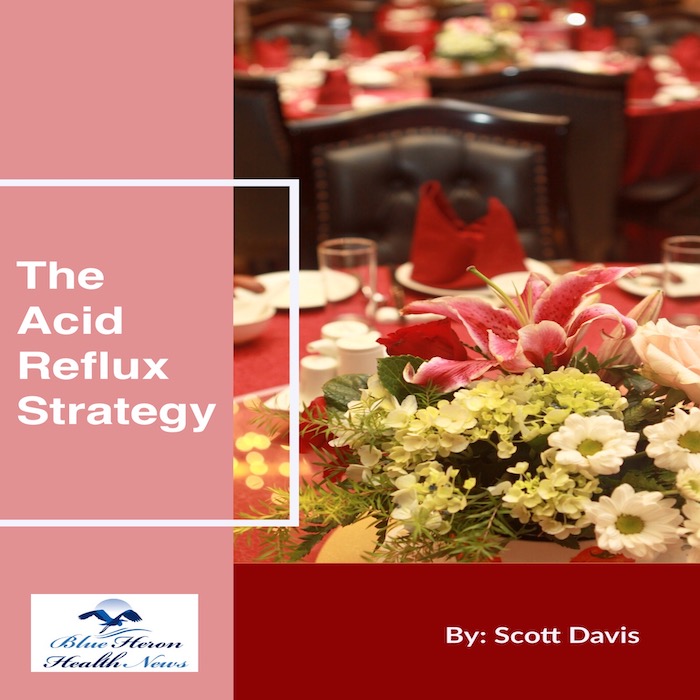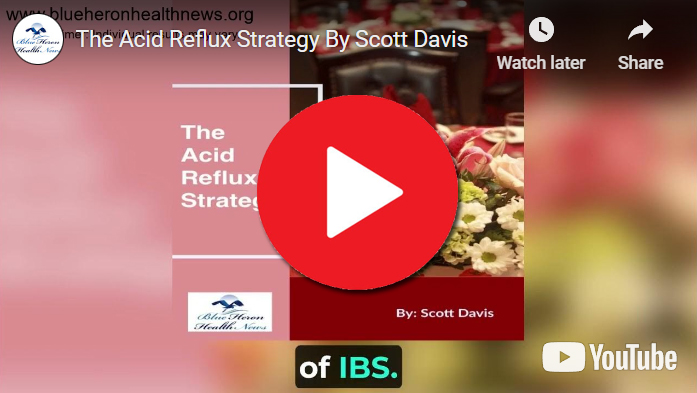
Acid Reflux Strategy™ By Scott Davis According to this eBook, you can start removing the symptoms of acid reflux and other similar problems just by making some changes in your diet, levels of stress, and lifestyle. It will guide you on how to change from the combination of food items to the sleep positions to relieve your problems. It also includes a list of food items you should focus on while shopping for it to find a natural treatment for your symptoms.
What foods should be avoided to prevent acid reflux?
To prevent or manage acid reflux, it’s important to be mindful of foods and beverages that can trigger or exacerbate symptoms. Acid reflux occurs when stomach acid flows back into the esophagus, causing discomfort such as heartburn. The following foods and drinks are commonly known to contribute to acid reflux by relaxing the lower esophageal sphincter (LES) or increasing stomach acid production:
1. Spicy Foods
- Examples: Chili peppers, hot sauces, spicy seasonings, and foods containing large amounts of spices like cayenne or pepper.
- Effect: Spicy foods can irritate the lining of the esophagus and stomach, potentially triggering acid reflux symptoms.
2. Fatty Foods
- Examples: Fried foods, fatty cuts of meat, full-fat dairy products (like cheese and cream), and foods with high levels of added fats (such as pastries, doughnuts, and fast foods).
- Effect: High-fat foods slow down the emptying of the stomach, increasing the likelihood of acid reflux. They also relax the LES, allowing acid to escape into the esophagus.
3. Citrus Fruits and Juices
- Examples: Oranges, grapefruits, lemons, limes, and their juices.
- Effect: Citrus fruits and juices are highly acidic, which can irritate the esophageal lining and exacerbate reflux symptoms.
4. Tomato-Based Foods
- Examples: Tomatoes, tomato sauces, ketchup, salsa, and tomato-based soups.
- Effect: Tomatoes are acidic and can contribute to heartburn and acid reflux symptoms.
5. Caffeine
- Examples: Coffee, tea, energy drinks, and certain sodas.
- Effect: Caffeine can relax the LES and increase the production of stomach acid, both of which can lead to acid reflux.
6. Chocolate
- Effect: Chocolate contains caffeine and theobromine, both of which can relax the LES and contribute to acid reflux.
7. Carbonated Beverages
- Examples: Sodas, sparkling water, and other carbonated drinks.
- Effect: The bubbles from carbonation can expand in the stomach, increasing pressure and pushing stomach contents into the esophagus.
8. Alcohol
- Examples: Beer, wine, spirits, and cocktails.
- Effect: Alcohol relaxes the LES and increases stomach acid production, which can lead to reflux symptoms.
9. Onions and Garlic
- Effect: Both onions and garlic can cause acid reflux symptoms in some individuals, possibly due to their strong flavors and the relaxation of the LES.
10. Peppermint and Spearmint
- Examples: Mint-flavored products such as gum, candy, tea, and breath fresheners.
- Effect: Mint can relax the LES, allowing stomach acid to flow back into the esophagus.
11. High-Sugar and Processed Foods
- Examples: Candies, cookies, cakes, and other sugary snacks.
- Effect: High sugar intake can increase gastric acid production and delay stomach emptying, contributing to acid reflux.
12. Dairy Products
- Examples: Whole milk, cream, and cheeses, especially those high in fat.
- Effect: High-fat dairy products can relax the LES and are slower to digest, which can increase the risk of reflux.
General Dietary Tips to Prevent Acid Reflux
- Eat Smaller, More Frequent Meals: Large meals can increase stomach pressure and the likelihood of reflux. Eating smaller, more frequent meals can help manage symptoms.
- Avoid Eating Before Bed: Eating late at night or lying down soon after eating can exacerbate reflux symptoms. It’s recommended to eat at least 2-3 hours before lying down or going to bed.
- Stay Upright After Eating: Sitting or standing after meals can help prevent stomach contents from flowing back into the esophagus.
- Chew Food Thoroughly and Eat Slowly: This helps in better digestion and prevents overeating, which can contribute to acid reflux.
- Stay Hydrated: Drink plenty of water throughout the day, but avoid large amounts during meals to prevent overloading the stomach.
- Avoid Tight Clothing: Tight clothing, especially around the abdomen, can increase stomach pressure and trigger reflux.
Conclusion
Avoiding or limiting these trigger foods can help manage and prevent acid reflux symptoms. However, individual responses to foods can vary, so it’s important for each person to identify their specific triggers. Keeping a food diary can help track foods that cause symptoms. If acid reflux is frequent or severe, it’s advisable to consult with a healthcare provider for personalized dietary advice and treatment options.
How does obesity contribute to acid reflux?
Obesity is a significant risk factor for developing acid reflux and its chronic form, gastroesophageal reflux disease (GERD). The relationship between obesity and acid reflux involves several physiological mechanisms that increase the likelihood of stomach acid flowing back into the esophagus. Here are the key ways in which obesity contributes to acid reflux:
1. Increased Abdominal Pressure
- Mechanism: Excess body fat, particularly around the abdomen, increases intra-abdominal pressure. This heightened pressure can force the contents of the stomach, including acid, to push against the lower esophageal sphincter (LES), the valve that separates the stomach from the esophagus.
- Impact: The increased pressure can weaken or overwhelm the LES, causing it to open inappropriately and allow acid to escape from the stomach into the esophagus, leading to reflux symptoms.
2. Hiatal Hernia
- Mechanism: Obesity is a risk factor for the development of a hiatal hernia, a condition in which part of the stomach protrudes through the diaphragm into the chest cavity. The diaphragm is a muscle that helps keep the LES closed.
- Impact: A hiatal hernia can disrupt the normal functioning of the LES, making it easier for acid to reflux into the esophagus.
3. Altered LES Function
- Mechanism: In individuals with obesity, the function of the LES can be compromised due to increased pressure on the stomach. Additionally, hormonal changes associated with obesity, such as increased levels of certain hormones like leptin, may affect the LES’s ability to maintain a tight seal.
- Impact: An impaired LES cannot effectively prevent the backflow of stomach contents, leading to more frequent episodes of acid reflux.
4. Delayed Gastric Emptying
- Mechanism: Obesity can slow down the digestive process, leading to delayed gastric emptying. This condition, known as gastroparesis, means that food and stomach acids remain in the stomach for a longer period.
- Impact: The longer the stomach contents stay in the stomach, the higher the chance of reflux. A fuller stomach exerts more pressure on the LES, promoting acid reflux.
5. Dietary Habits
- Mechanism: Individuals with obesity may have dietary habits that contribute to acid reflux, such as consuming large meals, high-fat foods, and foods that are known to trigger reflux (e.g., spicy foods, caffeine, and carbonated beverages).
- Impact: These dietary choices can exacerbate reflux symptoms by increasing stomach acid production and relaxing the LES.
6. Hormonal Factors
- Mechanism: Obesity is associated with changes in hormone levels, including an increase in the hormone leptin and a decrease in adiponectin. Leptin can influence the digestive tract, potentially increasing the risk of reflux, while lower adiponectin levels are associated with inflammation and may affect the esophagus.
- Impact: Hormonal imbalances can contribute to a range of digestive issues, including acid reflux.
7. Lifestyle Factors
- Sedentary Lifestyle: Obesity is often associated with a sedentary lifestyle, which can contribute to weight gain and increase the risk of acid reflux.
- Postural Effects: The increased abdominal girth in obesity can make it more difficult to maintain proper posture, potentially exacerbating reflux symptoms when lying down or bending over.
Managing Acid Reflux in Obesity
To manage acid reflux effectively, individuals with obesity can consider the following strategies:
- Weight Loss: Losing weight can significantly reduce the frequency and severity of acid reflux symptoms. Even a modest weight loss of 5-10% can have a positive impact.
- Dietary Changes: Adopting a balanced diet that avoids known triggers, such as high-fat foods, spicy foods, caffeine, and alcohol, can help reduce reflux episodes.
- Smaller, Frequent Meals: Eating smaller, more frequent meals instead of large ones can help decrease stomach pressure and reduce reflux risk.
- Elevating the Head of the Bed: Elevating the head during sleep can prevent stomach acid from flowing back into the esophagus.
- Avoiding Lying Down After Eating: Staying upright for at least two to three hours after eating can help prevent acid reflux.
- Regular Physical Activity: Engaging in regular physical activity can help with weight loss and improve overall digestive health.
- Medication and Medical Advice: Over-the-counter or prescription medications may be necessary to manage symptoms. Consulting with a healthcare provider can help tailor a treatment plan that includes lifestyle changes and medication.
Conclusion
Obesity contributes to acid reflux through multiple mechanisms, including increased abdominal pressure, impaired LES function, delayed gastric emptying, and associated dietary habits. By addressing obesity and making targeted lifestyle changes, individuals can significantly reduce the incidence and severity of acid reflux symptoms. It’s important for those experiencing chronic reflux symptoms to seek medical advice for appropriate management and to prevent potential complications.
Acid Reflux Strategy™ By Scott Davis According to this eBook, you can start removing the symptoms of acid reflux and other similar problems just by making some changes in your diet, levels of stress, and lifestyle. It will guide you on how to change from the combination of food items to the sleep positions to relieve your problems. It also includes a list of food items you should focus on while shopping for it to find a natural treatment for your symptoms.
